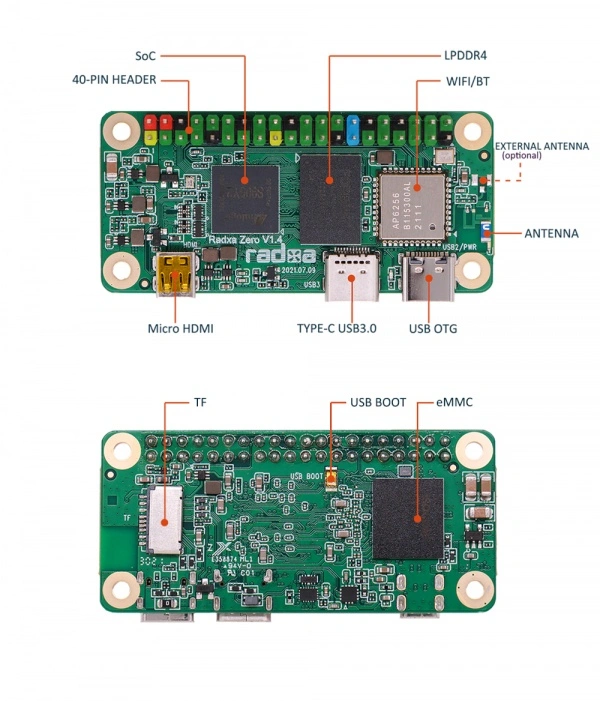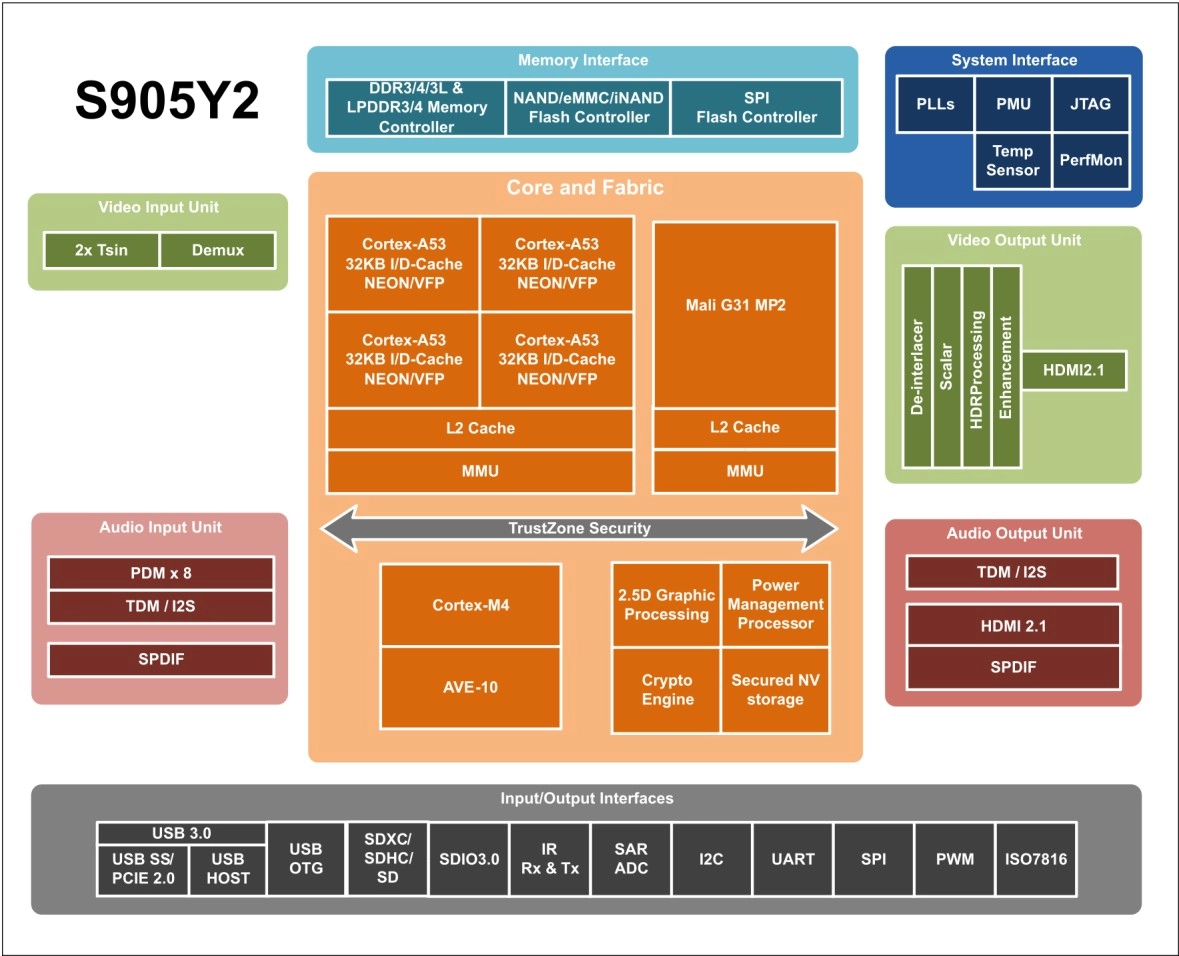ZERO
Product Description
- Radxa Zero is a small form factor high performance single board computer based on the Amlogic S905Y2, which runs Android and Linux!
- Radxa Zero has a 4-core 64-bit processor, up to 4GB (32bit) LPDDR4 memory, 4k@60 HDMI output support, WiFi and Bluetooth support, and onboard USB3.0, 40-pin GPIO interface.
- The onboard USB2.0 OTG interface supports power supply and data transfer.
Physical photos
Radxa ZERO

Chip block diagram

Features
| Model | Radxa ZERO | |
| SoC | Amlogic S905Y2 | |
| CPU | Quad-core Cortex-A53, up to 1.8GHz | |
| GPU | Arm Mali G31 MP2 GPU, supports OpenGL ES 3.2, Vulkan 1.0, and OpenCL 2.0. | |
| RAM | 512 MB,1/2/4 GB LPDDR4 | |
| ROM | Onboard eMMC Module: 0/8/16/32/64/128 GB microSD card | |
| Display | Micro HDMI x 1,4K60p | |
| Wireless | ap6212/ap6256/aw-cm256sm WIFI/BT module | |
| USB | USB 2.0 Type-C OTG x1 USB 3.0 Type-C HOST x1 | |
| Other | 40-Pin Header | |
| Power supply | Requires 5V power adapter, recommended to use a power adapter with a rated maximum current greater than 2A | |
| Size | 65mm x 30mm | |
System Block Diagrams
- Radxa ZERO

Documentation guidelines
Except for the other systems directory below, the other contents are based on Radxa OS (Radxa's customized system based on Debian).
Getting started
By introducing system programming, system login, accessory usage, etc., let user can get started quickly.
Radxa OS
Radxa OS is an operating system customized by Radxa based on Debian OS. This chapter introduces system login, network connection, etc to let user to be familiar with the system quickly.
System Configuration
Introduces how to use tools like rsetup or command line to use devices or function.
Application Deployment
Introduces how to deploy the applications such as Samba, Docker, PVE, OMV, LAMP, Cheese, remote control panel, etc.
Application Development
Introduces upper-layer application development, such as QT, WiringX, Mraa, etc.
Hardware Development
Introduces hardware information, such as hardware interfaces, supported accessories, etc.
Lower level Development
Introduces uboot, kernel, debian os compilation and packaging, etc.
Other Systems
Introduces other systems than Radxa OS, such as Android
Accessories
Introduces supported accessory models and instructions for use.